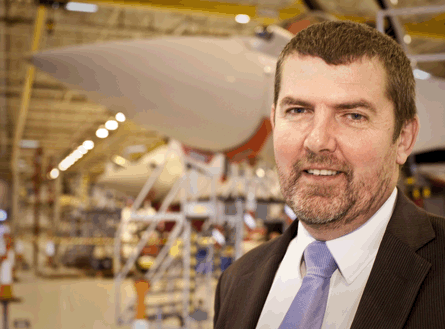As Typhoon marketing aircrew adviser for BAE Systems Military Air Solutions, former Royal Air Force test pilot Craig Penrice brings a flier's perspective to the company's Eurofighter sales efforts
What sparked your interest in aircraft?
My parents' house lay under the approach path to Glasgow airport. I started as a "spotter", with binoculars and a copy of Civil Aircraft Markings to note down registrations. That interest led me to apply for BOAC's Hamble training school, but the first oil crisis of the mid-1970s effectively closed that avenue to me. I was then driven towards the Royal Air Force; a decision I never once regretted - I don't think civil airline flying was really my thing.
 |
|---|
© BAE Systems |
What was your operational experience with the RAF?
After completing the normal training path through Bulldog, Jet Provost and Hawk, I started off on the Lightning. It was a fantastic aircraft to learn about being a fighter pilot: always short of fuel and weapons, you had to stay on top of your game to keep out of trouble. I accumulated about 900h on it before becoming an instructor on the Hawk for three years. I then went on exchange with the US Air Force flying the F-15C Eagle.
How did you become a test pilot?
After flying the Eagle, policy decisions meant I couldn't get an appropriate position on the Tornado force because I hadn't been there before - a good "catch-22" situation. A test pilot friend told me the normal selection process had not turned up a suitable candidate for the next course, and would I be interested? I jumped at the offer. Then, after 18 years in the RAF, I joined BAE Systems as a test pilot in 1998.
Which aircraft have you most enjoyed flying?
For pure fun, things like the Pitts S2, Extra 300 and Yak 50. For professional satisfaction, my work on developing Typhoon.
What made you to stop flying?
In 2003 I was forced to eject from a Hunter when its engine stopped. I broke my back in the process and have a lot of metal work still supporting my lower spine. The effect of any subsequent ejection would be totally unpredictable, and no doctor (or insurance company) would ever sign off on letting me fly on a "bang seat" again. It took a long time to come to terms with this enforced grounding, but I do a little bit of private flying and regularly get into the Typhoon simulator as part of my current job.
What does your position with BAE entail?
I work within our business development department. My experience allows me to talk about Typhoon with a conviction and credibility that is maybe unusual within the marketing community. One part of my work is dealing with pilots from potential customer air forces and talking pilot-to-pilot, as we do speak our own unique language. When we get written questions from pilots I can put them into context, or "engineer speak", to help guide our efforts in responding.
Describe a typical week
The good thing is that there is no such thing. I travel quite a lot in support of the numerous Typhoon export campaigns, not just those where BAE Systems is the nominated lead company. In the past year that has taken me to Japan, Turkey, Greece, Canada, Saudi Arabia and a couple of other countries, as well as routine trips to Germany, Italy and Spain. I also attend most major trade shows. I also work closely with the RAF and UK Ministry of Defence in planning for official visits to show Typhoon operations to prospective customers. The RAF is perhaps our best sales asset.
How would you advise a youngster interested in becoming a military pilot?
Now more than ever the military offers an amazing opportunity for young men and women, but it's not something to be entered into lightly. The military and military flying is a career, not a flying club. If you have any doubts about why the RAF is the way it is and why it does what it does, it is not the career for you. Be prepared to face some tough challenges, some detailed critiques of your performance and ability, and work harder than you ever imagined possible.
Source: Flight International























